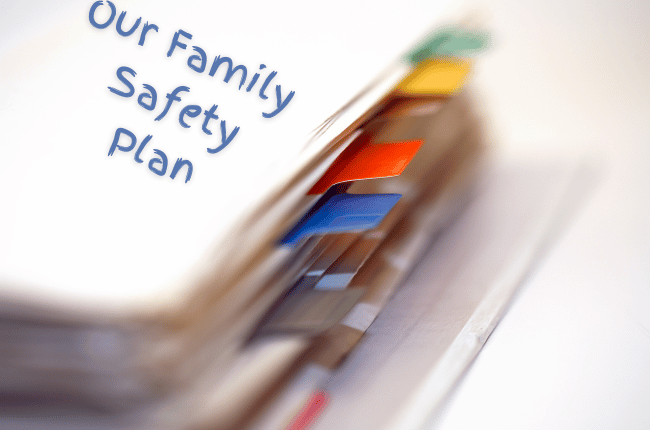Essential Emergency Preparedness Tips for Your Home
Life is full of surprises, and not all of them are pleasant. Whether it’s a severe storm, a power outage, or an unforeseen emergency, being prepared can make all the difference. As Natalie Washburn, Broker/Owner of Maleno Real Estate, says, “Preparedness is not about expecting the worst; it’s about ensuring you and your loved ones can navigate unexpected challenges with confidence and safety.” With that in mind, we’ve compiled a comprehensive guide to help you get ready for any emergency.
1. Organize a Family Safety Plan Binder
Emergencies can be chaotic, but having all critical information in one place can save precious time. A Family Safety Plan Binder is a practical way to keep everything organized. Here’s what it should include:
- Emergency Contact List: Include phone numbers for family members, neighbors, and local emergency services.
- Medical Information: Document allergies, medications, and health conditions for every family member.
- Utility Information: Write down contact numbers for gas, electric, and water providers in case of outages or leaks.
- Important Documents: Store copies of birth certificates, insurance policies, and passports in waterproof sleeves.
- Evacuation Routes and Meeting Points: Map out safe exits from your home and designate a central meeting location.
Natalie Washburn emphasizes, “Being proactive by assembling this binder ensures you won’t waste time searching for essential information during a crisis.”
2. Build a Fire Safety Action Plan
House fires are a leading cause of property damage and injury. A well-thought-out Fire Safety Action Plan can be lifesaving. Here’s how to prepare:
- Install Smoke Detectors: Place them on every level of your home and in each sleeping area. Test them monthly and replace batteries annually.
- Plan Escape Routes: Identify two exits from each room and practice escape drills twice a year.
- Fire Extinguishers: Keep one in the kitchen, garage, and near bedrooms. Make sure everyone knows how to use them.
- Preventative Measures: Never leave cooking unattended, and keep flammable materials away from heat sources.
“Preparation goes beyond having a fire extinguisher; it’s about educating your family on how to act swiftly,” Natalie advises.
3. Prepare for Severe Weather: Tornado Safety

Tornadoes can strike with little warning, especially in certain regions. A Tornado Readiness Plan ensures your household is prepared:
- Designate a Safe Room: Ideally, this should be a basement or an interior room on the lowest level of your home without windows.
- Monitor Weather Alerts: Use a NOAA Weather Radio or a reliable weather app to stay updated.
- Emergency Kit for Tornadoes: Include helmets (for head protection), sturdy shoes, and whistles to signal for help.
- Post-Storm Safety: Avoid downed power lines and wait for official clearance before leaving your safe area.
Natalie reminds us, “Staying informed and having a safe space designated can significantly reduce the risks during severe weather.”
4. Assemble an All-Purpose Emergency Kit
A well-stocked emergency kit is a cornerstone of preparedness. Here’s what it should include:
- Water: One gallon per person per day for at least three days.
- Non-Perishable Food: Include items like canned goods, granola bars, and baby food if needed.
- First Aid Supplies: Bandages, antiseptics, pain relievers, and prescription medications.
- Flashlights and Batteries: Include extra batteries and a hand-crank flashlight.T
- ools: A multi-tool, duct tape, and a whistle.
- Communication Devices: A battery-powered or hand-crank radio and portable phone chargers.
- Personal Items: Blankets, hygiene supplies, and a change of clothes for each family member.
Store your kit in a waterproof container and check its contents annually to replace expired items.
5. Plan for Power Outages
Power outages can last hours or even days, making it essential to plan ahead. Here are some tips:
- Backup Power: Invest in a generator to keep essential appliances running.
- Battery-Powered Essentials: Keep flashlights, a portable phone charger, and a battery-powered fan on hand.
- Preserve Food: Have a cooler with ice packs ready to store perishable food items if the power goes out.
- Entertainment: Stock up on books, board games, and cards to pass the time.
6. Consider Special Needs

Every household is unique, so tailor your emergency preparations to your family’s needs:
- Pets: Prepare a pet emergency kit with food, water, medications, and a leash.
- Elderly or Disabled Family Members: Ensure mobility aids, medications, and other essential items are easily accessible.
- Infants: Stock diapers, formula, and baby wipes.
“Preparedness means accounting for everyone in the household, including pets and individuals with special needs,” Natalie highlights.
7. Stay Informed and Involved
.png)
Community resources and emergency services are vital during a crisis. Stay informed by:
- Signing Up for Alerts: Many local governments offer text or email emergency alerts.
- ReadyErie Preparedness App - the ReadyErie app provides critical information and emergency alerts for Erie County residents. It allows you to create and share emergency plans, locate shelters, view evacuation routes, and receive real-time updates. You can download the app for free from the Apple App Store or Google Play Store.
- Ready PA Alerts: The Pennsylvania Emergency Management Agency (PEMA) offers the Ready PA system, which provides weather alerts, building alerts, health notifications, and other timely updates. You can sign up for these alerts on the Ready PA website.
- Local News Alerts: Erie News Now offers text alerts for weather updates and other emergencies. To sign up, text the keyword "WEATHER" to 814-402-3500.
- Participating in Community Drills: Join neighborhood preparedness programs or events.
- Building a Support Network: Get to know your neighbors and develop a plan to check on one another.
8. Regularly Update Your Plans
Emergency preparedness isn’t a one-time task. Review and update your plans and kits at least annually. Make it a family activity to:
- Test Smoke Alarms: Replace any that aren’t functioning.
- Refresh Supplies: Rotate food, water, and batteries in your emergency kit.
- Reassess Needs: Adjust plans to reflect changes in family size, health conditions, or living arrangements.
Final Thoughts
Being prepared is an act of care and responsibility. As Natalie Washburn puts it, “When we take the time to prepare, we’re investing in our safety and peace of mind.” At Maleno Real Estate, we believe in empowering homeowners with knowledge and tools to face challenges head-on. By implementing these tips, you’re taking a proactive step toward safeguarding your home and loved ones.





